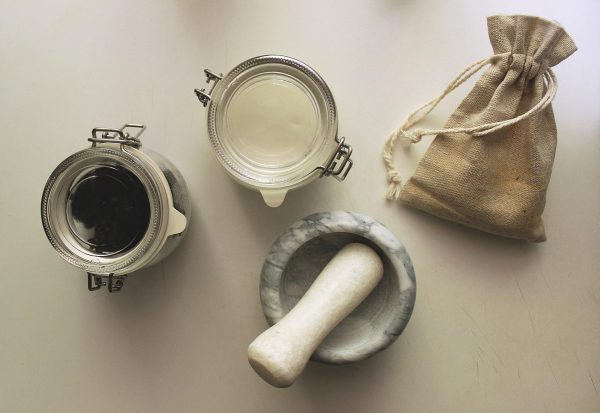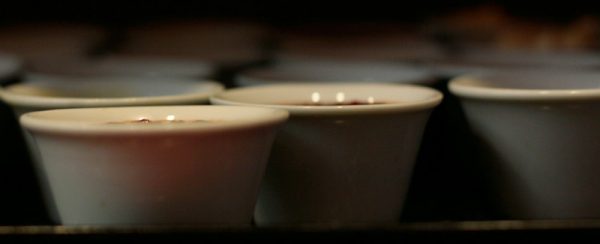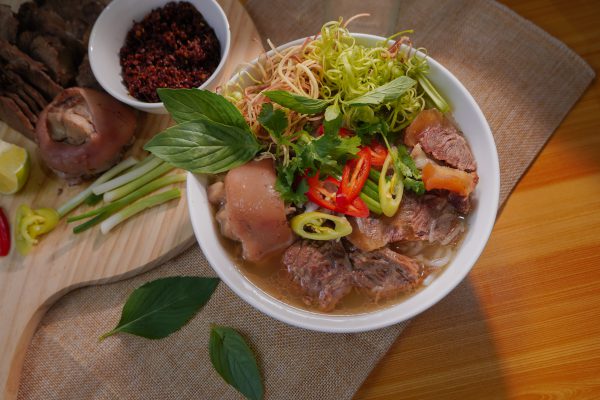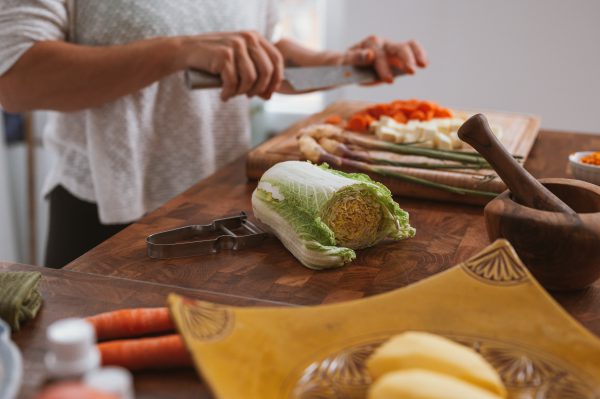Last Updated on May 27, 2022
A molcajete is the Mexican version of the mortar and pestle. In this article, we tell you the major advantages of a molcajete and whether you should get one or go for a granite mortar and pestle. Either way, a mortar and pestle can unlock many new recipes in your cookbook. You can use it to grind spices or nuts and make pastes such as pesto, guacamole, or even peanut butter. If you’re thinking of adding this must-have kitchen tool to your arsenal, you may be wondering which version is the best for you. After all, this old tool has a version in every culture and cuisine around the world, so there’s a lot of variety.
To decide which version you want to get, you first need to understand the differences in its shape and the materials it can be made from. There are mortar and pestles made from brass, marble, volcanic rock, granite, cast iron, wood, stainless steel, or brass. If you’re confused, check out this guide on how to choose the best mortar and pestle.
Why Not Use a Blender?
A molcajete or any kind of mortar is great for crushing ingredients in between two rocks. Crushing things brings out different flavors than chopping ingredients into small pieces. When you crush an ingredient, let’s say a clove of garlic, you bust its cells open and smash it to a pulp.
Sure, you could achieve similar results with an electronic blender. But although a blender is capable of chopping up everything you put in it with its high-speed blades, it doesn’t enhance the flavor like a molcajete or a mortar does, as with either of those two, you’re actually smashing your mix of ingredients together and marrying their flavors in the process. Even though it requires some elbow grease, a mortar and pestle are superior to a blender.
What is a Mortar and Pestle?

A mortar and pestle is a set that is used to mince various foods and other substances. You can find kitchen mortars that are made of granite, marble, volcanic rock, wood, ceramic or stainless steel. And there are differences among all these types.
Some of these materials are better than others for heavy-duty mashing. The stability of a mortar also plays a role. Porcelain or ceramic models, for example, can only do so much. They’re not as sturdy as natural stone mortars, so if you’re trying to use them to crush hard grains, in particular, it would be a real challenge. In rare cases, their surface can flake off and small fragments can become detached. You may use them to ground herbs, and they’ll do a good job of that, but they can rarely take on anything harder.
Stone mortars, on the other hand, are excellent for heavy-duty use and thus justify their usually higher price. It’s worth investing in a mortar made of natural stone (such as granite or marble or volcanic rock) or a metal alternative (such as cast iron) if you intend to use it with harder ingredients.
Granite mortars are reliable tools that not only remain stable during grinding but are also more efficient and easier to use thanks to their non-slip properties. They perform better with large or solid ingredients and have a long service life.
Lastly, a volcanic rock mortar and pestle is a traditional Mexican tool that’s also called a molcajete. This mortar and pestle falls into the category of sturdier natural rock sets.
What’s a Granite Mortar and Pestle?
The name is self-explanatory — a set made of granite. Even though there are many different materials that a mortar and pestle can be made of, granite is the most popular one, and that’s for a reason.
Granite is a solid stone resistant to scratches. It’s excellent for a variety of things, from grinding to smashing, and can endure most of the things you might want to grind in it. It’s robust enough for recipes that require lots of crushing and grinding.
Pros:
- Suitable for heavy-duty use
- Heavier pestle lets you grind with less effort
Cons:
- Pricier than other types of mortar and pestles
- More difficult to cure and season because of the hard surface
What’s a Molcajete?
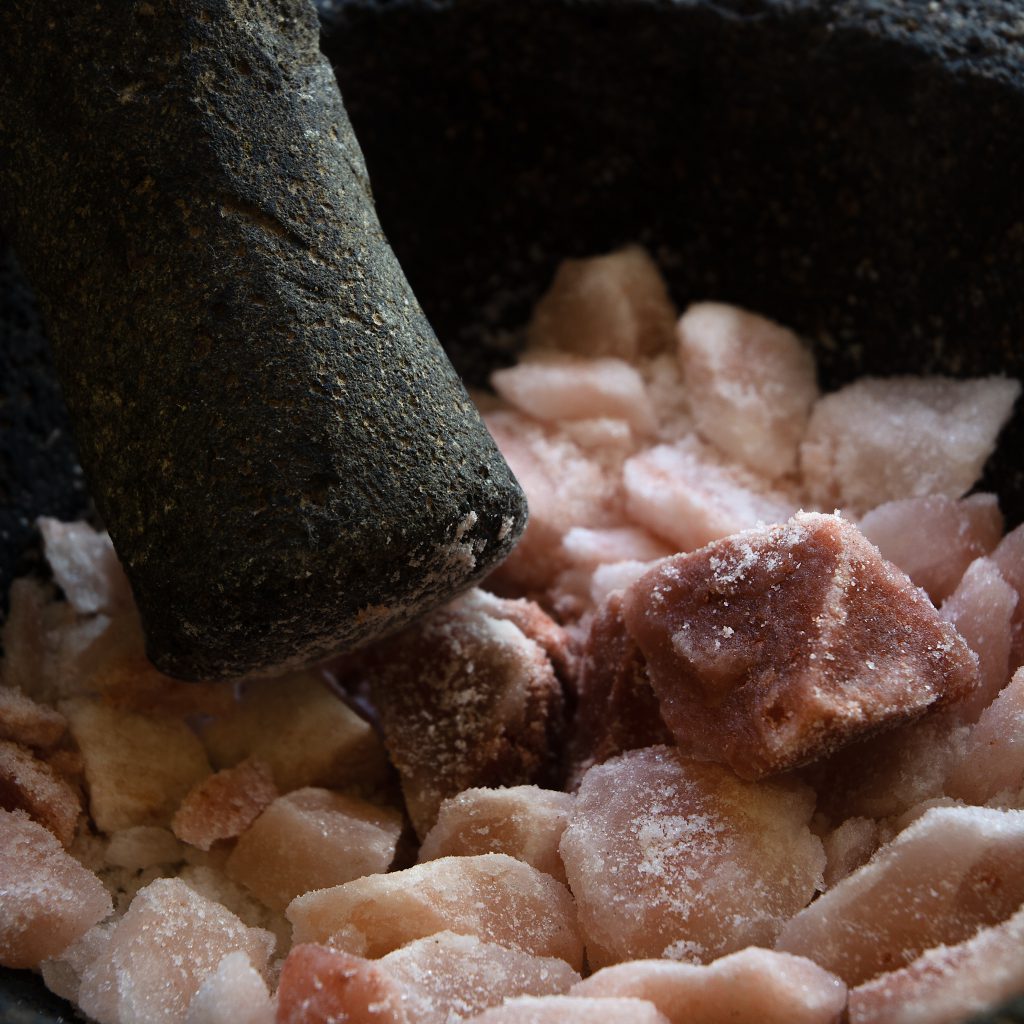
Molcajete is the pre-Hispanic version of mortar and pestle often used in Mexican cuisine. They are basically the same tool with minor differences in terms of material and shape.
Molcajetes are usually made from volcanic rocks and the rough and rugged surface they provide makes grinding easier. Plus, if you season a molcajete correctly, the essence of the spices and herbs you use to season it will stick to all the nooks and crannies of the textured surface, which later perfumes whatever you make in it, just like a granite mortar and pestle.
Pros:
- The wider vessel lets you blend with a stirring motion
- Easier to cure and season
- Brings a touch of the pre-Hispanic aesthetic to your home
Cons:
- More fragile than a granite mortar and pestle, can crack under heavy pressure
- Can’t grind hard grains and seeds conveniently
Molcajete vs Granite Mortar and Pestles
Let’s explore how both these types of mortar and pestle compare in more detail.
With molcajetes, there’s one caveat — the volcanic rocks are usually less rigid than granite, so you can’t go berserk with a molcajete when crushing hard things like spice seeds.
Molcajetes come with three legs that lift the mortar slightly off the counter. This design must have served its purpose back in the days when it wasn’t easy to carve a stone flat to give it a stable foundation. They do give the molcajete some added stability, but today it’s possible to make all sorts of pedestals to make a mortar stand strong. So, today, the three legs of a molcajete only serve an aesthetic purpose.
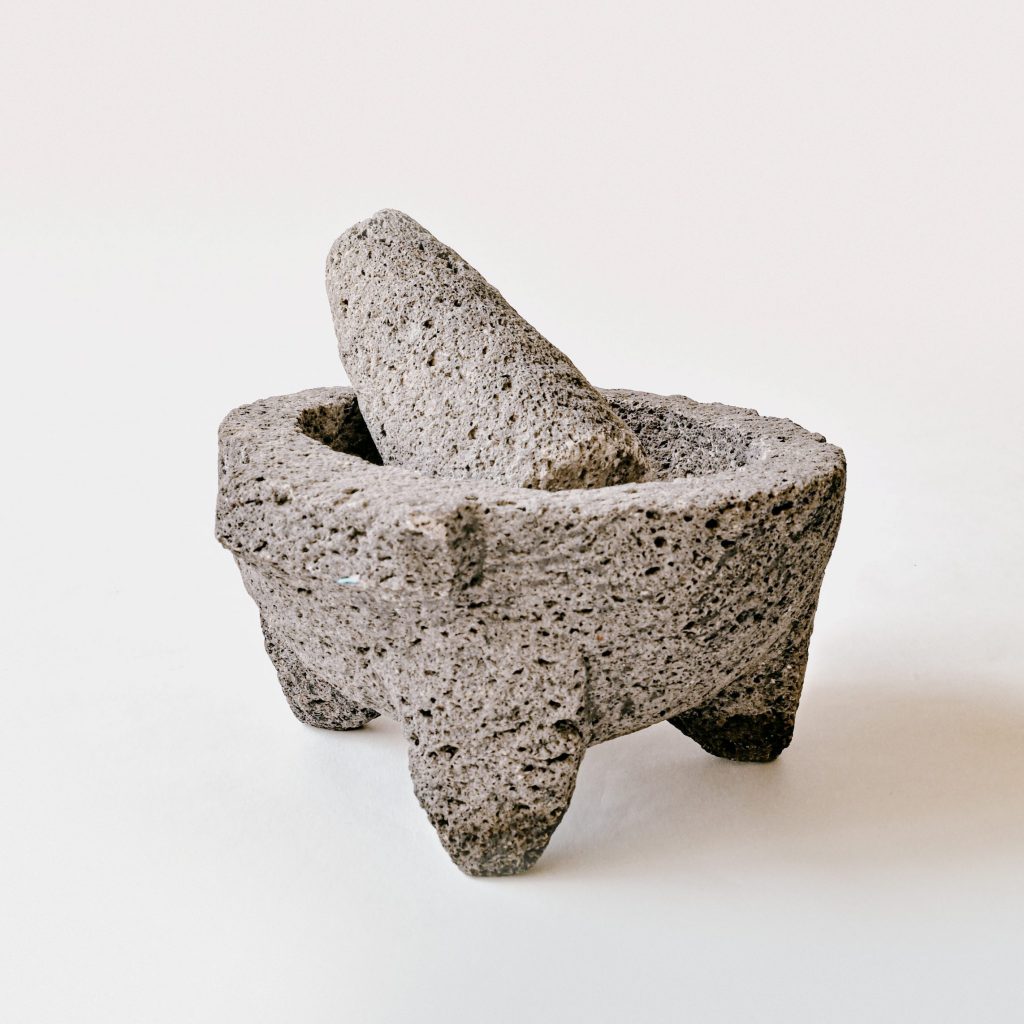
That said, the volcanic rocks that molcajetes are made of aren’t as durable as granite. If you lean on your molcajete with all your weight while using it, you might crack its body or legs in half. On the other hand, a regular mortar and pestle is more like a semi-sphere without legs, sometimes with a pedestal that’s so strong that you couldn’t break it even if you wanted to.
A molcajete is also shallower and wider than a granite mortar and pestle. A narrower and longer design helps you crush harder ingredients — such as spice seeds — more easily because you can bounce on them with the pestle while covering the opening with your other hand to keep the ricochets in the mortar.
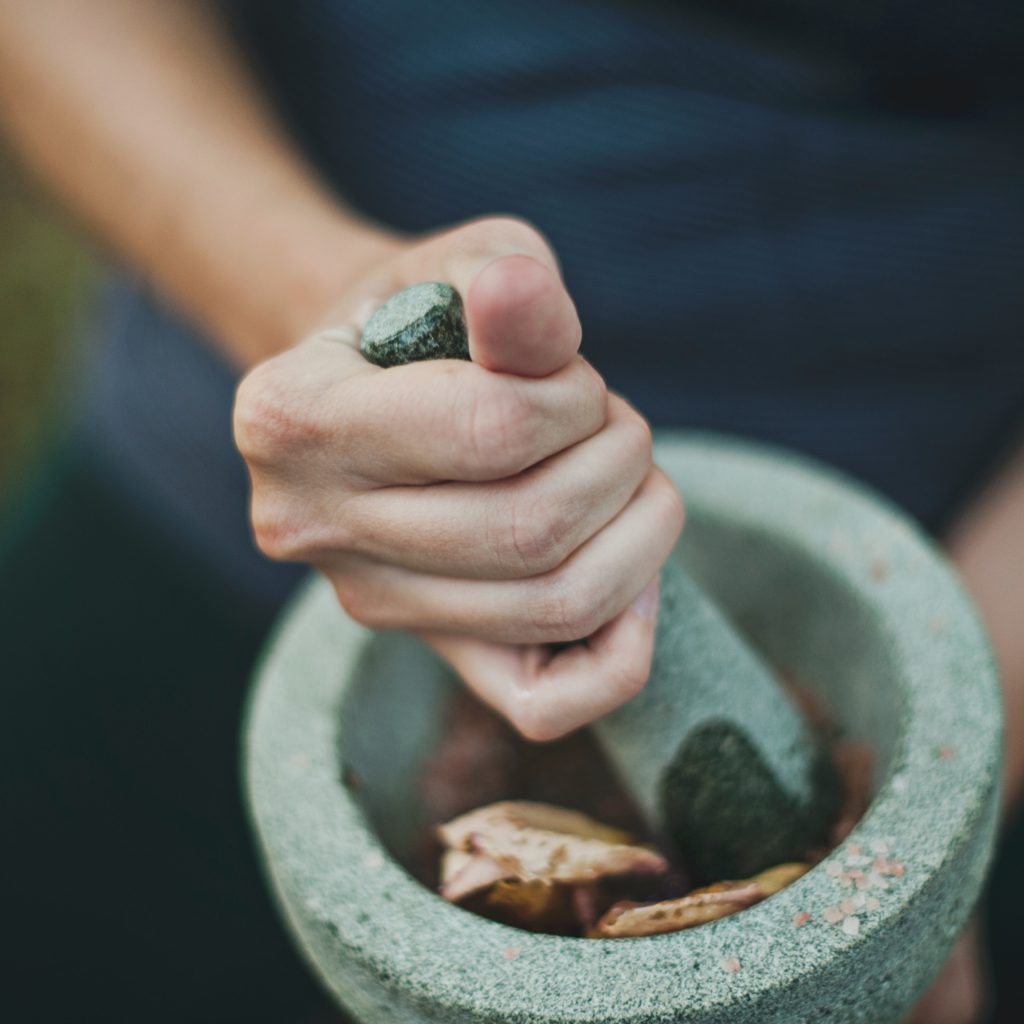
How to Use a Molcajete
Since a molcajete is the more eccentric of the duo, let’s see how you can use it and whether you need a different technique.
You can think of a molcajete as a broader, shallower mortar with a twist. The volcanic rocks that molcajetes are made of are more textured but aren’t as rigid as granite, so the things you can do with a molcajete are a bit different than what you can do with a granite mortar.
When you’re using a molcajete, the way to hold the pestle is to grab it in your palm and grind it against the surface of the molcajete. One common mistake most people make is using the technique they would use with a big granite Thai mortar and pestle and pounding the pestle against the molcajete. If you make a habit of doing so, you will eventually crack the molcajete in half. The best technique to use with a molcajete is to grind the pestle against the rock, with a twist in your wrist.
Thanks to its shape and frame, a molcajete is great for making sauces such as guacamole or a number of Mexican salsas. The wide and shallow shape of the tool lets you mix the ingredients with ease. You can blend pretty well with a molcajete, but you can’t go pounding and bashing with full strength, which keeps you from doing some finer grounding. This usually results in more rustic pastes with small chunks. A molcajete is a great tool for recipes for which you actually don’t want to reach extra smoothness.
So Which One Should You Get?
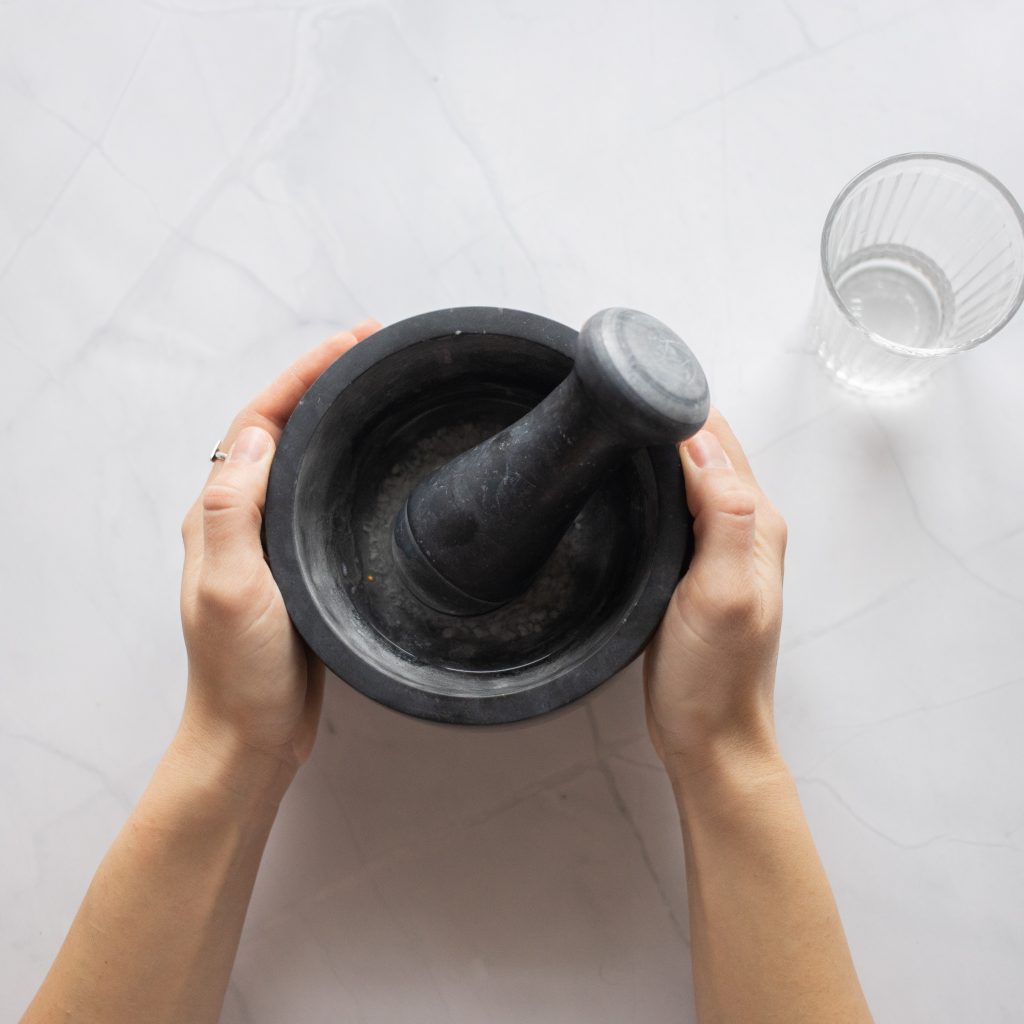
In a nutshell, both molcajetes and granite mortars are great for enhancing flavors in your ground pastes or spices. They transform their texture and let the ingredients release their authentic aromas. And foodies around the world are aware of this magical tool, as different types of mortar and pestle are becoming valued collectible items in kitchens around the world.
A molcajete is a useful tool that lets you make chunky pastes like guacamole or salsa. But if you want finer processing, a granite mortar and pestle is better. It’s also the more versatile tool that’ll do the trick for most tasks you expect a mortar and pestle to be able to accomplish.
If you like to have options, however, we’re all for getting both of them. That way, you can experiment with them and see which one is better for different recipes. Besides, both look authentically decorative and both will give you a serious arm workout.


